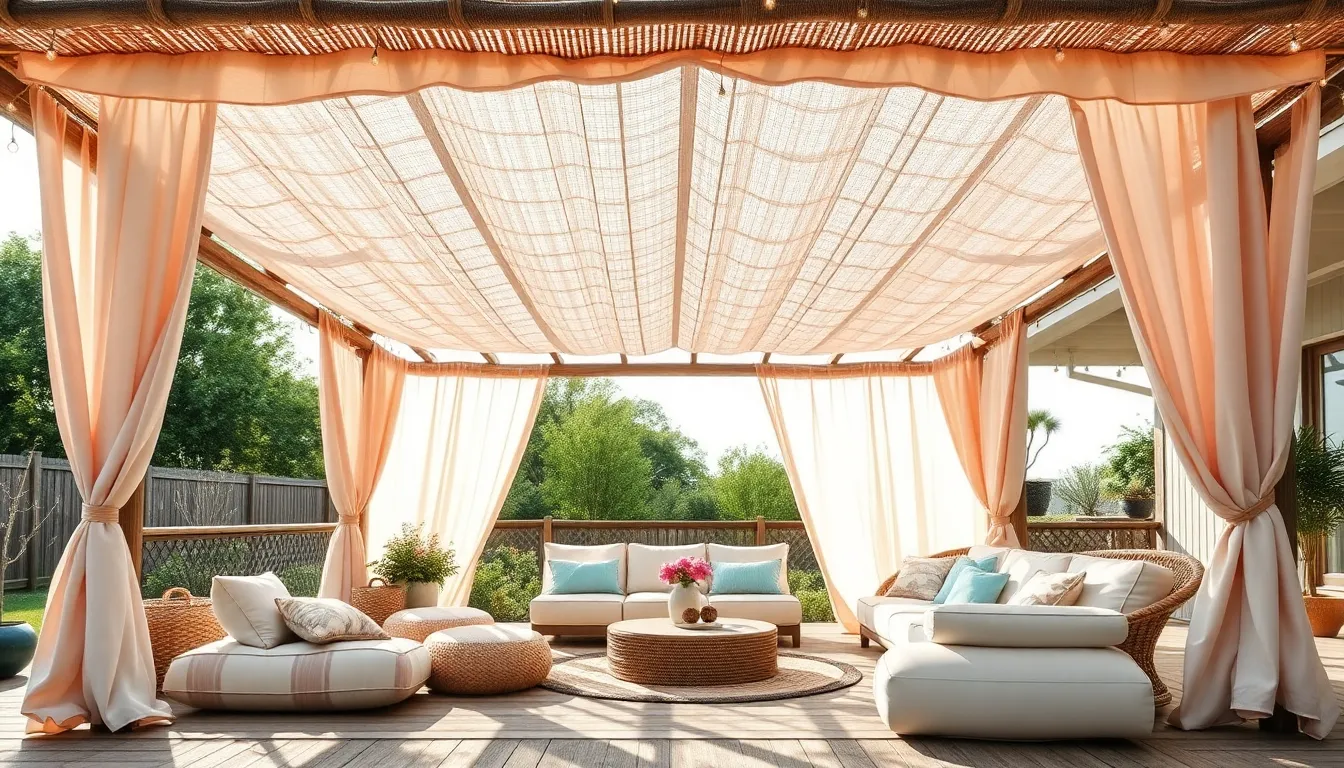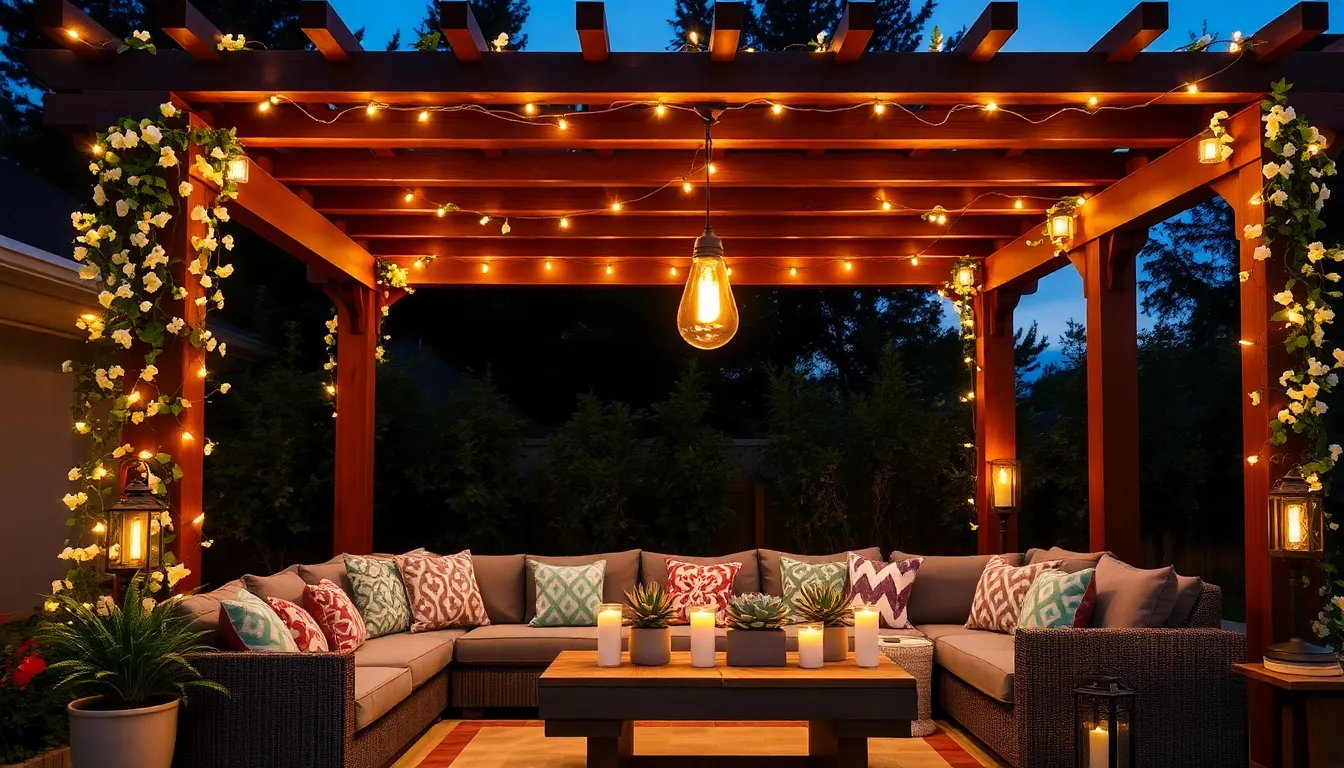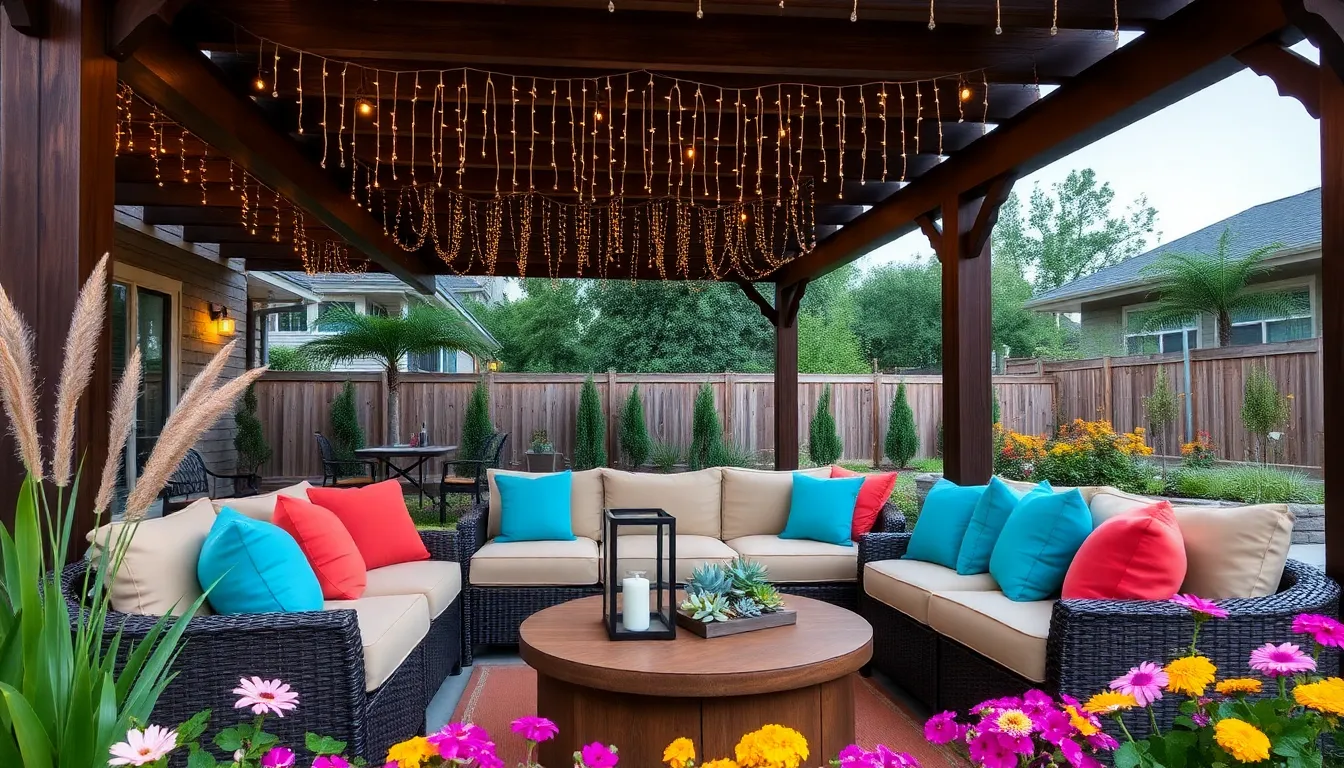Transforming a small outdoor space into a personal oasis may seem like a daunting task, but with the right design, even the tiniest patio can become a haven of comfort and style. For both the novice and the seasoned homeowner, pergolas offer a versatile solution that marries functionality with aesthetic appeal. Whether you’re looking to create a cozy reading nook or a stylish dining area, a well-designed pergola can elevate your outdoor living experience, making it both practical and inviting.
In this article, we’ll explore nine innovative pergola designs specifically crafted for small spaces, providing you with creative ideas and practical tips to maximize your outdoor area. You’ll discover how to blend form and function seamlessly, ensuring your pergola not only enhances your patio’s charm but also serves as a space for relaxation and entertainment. Get ready to unlock the potential of your compact outdoor space and turn it into the retreat you’ve always dreamed of.
Maximizing Small Pergola Footprints
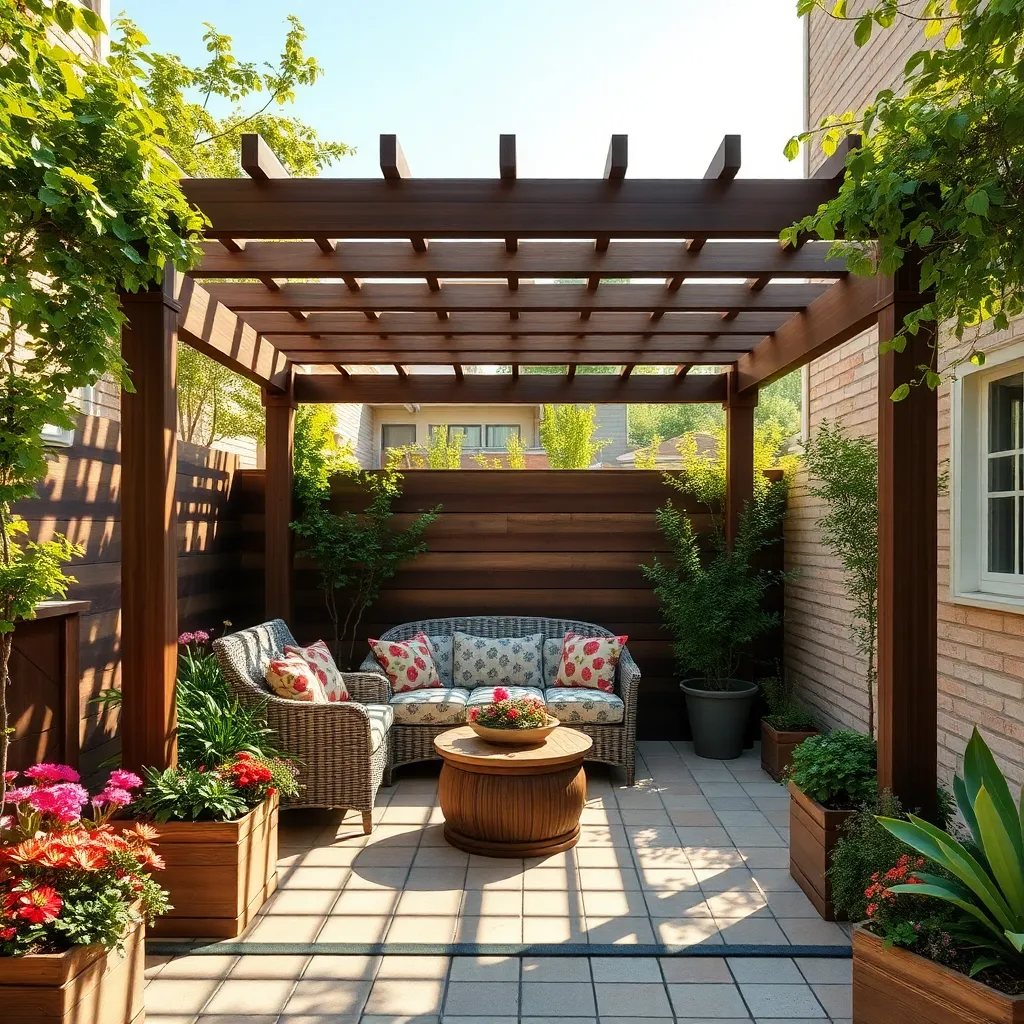
When working with a small pergola footprint, it’s essential to choose materials and designs that maximize space without compromising functionality. Opt for a minimalist design using slender wooden beams or metal frames to create an airy feel. Consider using retractable canopies or climbing plants to provide shade without adding bulk. For those with limited DIY experience, pre-cut pergola kits offer a straightforward assembly process, ensuring that even beginners can achieve a professional look.
Advanced gardeners looking to enhance their small pergola can integrate multi-functional elements to maximize utility. Incorporate built-in seating or planters along the structure’s perimeter to save space and add greenery. To extend usability, install solar-powered LED lights along the beams for nighttime ambiance.
- Choose weather-resistant materials like cedar or aluminum for durability.
- Keep pergola dimensions proportional to your outdoor space, ideally no larger than 10×10 feet for small yards.
By focusing on these elements, you can create a functional and stylish retreat, even in the most compact outdoor areas.
Compact Pergola Design Essentials
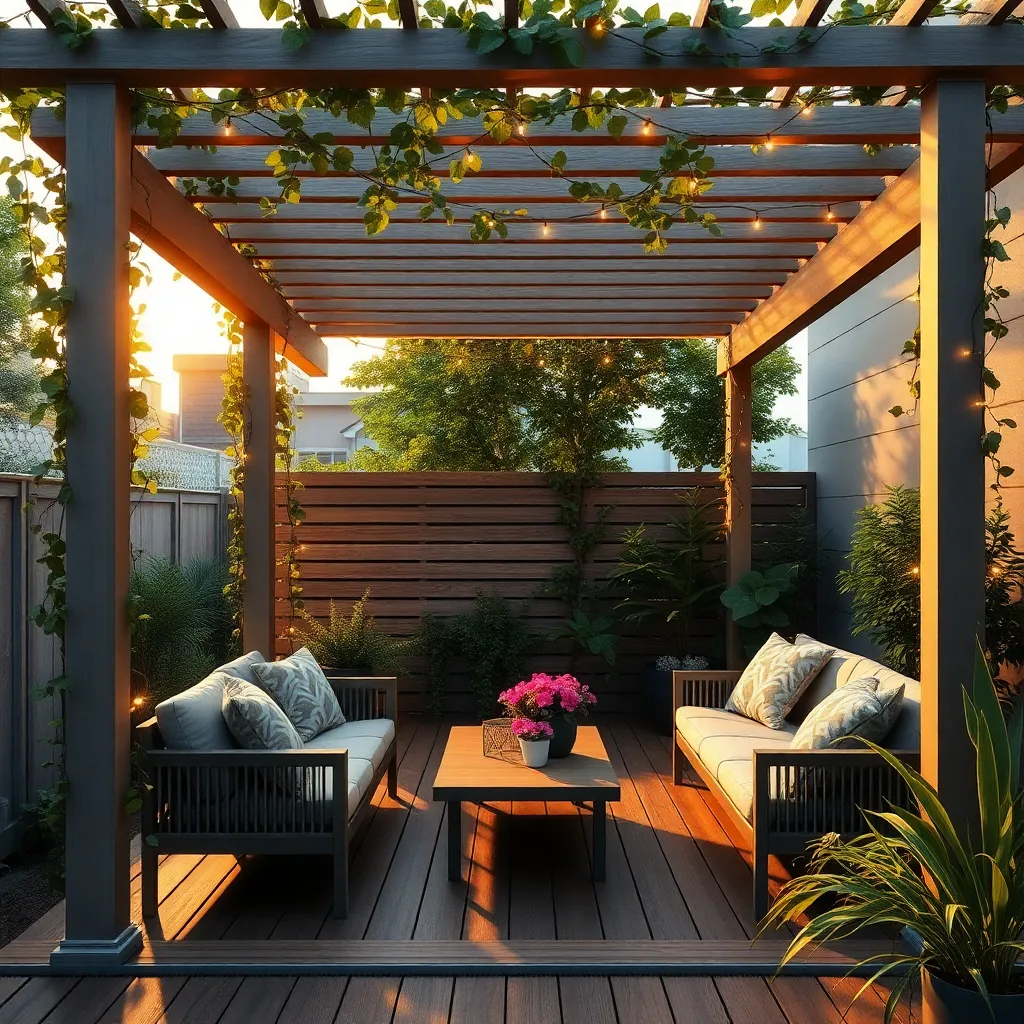
When designing a compact pergola, start by considering the optimal size and placement for your space. A pergola with dimensions of around 8×8 to 10×10 feet can fit snugly in a small backyard or patio area, offering a cozy yet functional outdoor retreat. For materials, opt for durable yet space-efficient choices like aluminum or treated wood, which provide strength without bulk. These materials can withstand various weather conditions, making them ideal for any region while keeping maintenance low.
Incorporate design elements that enhance both aesthetics and functionality. Consider using a lattice or open roof design to allow natural light while providing partial shade. For added flair, integrate climbing plants such as clematis or jasmine, which can grow vertically and save space. Advanced gardeners might use adjustable louvers, offering control over the sunlight and ventilation. By focusing on these essentials, you’ll create a charming and practical pergola that maximizes your small outdoor space.
Innovative Space-Saving Pergola Ideas
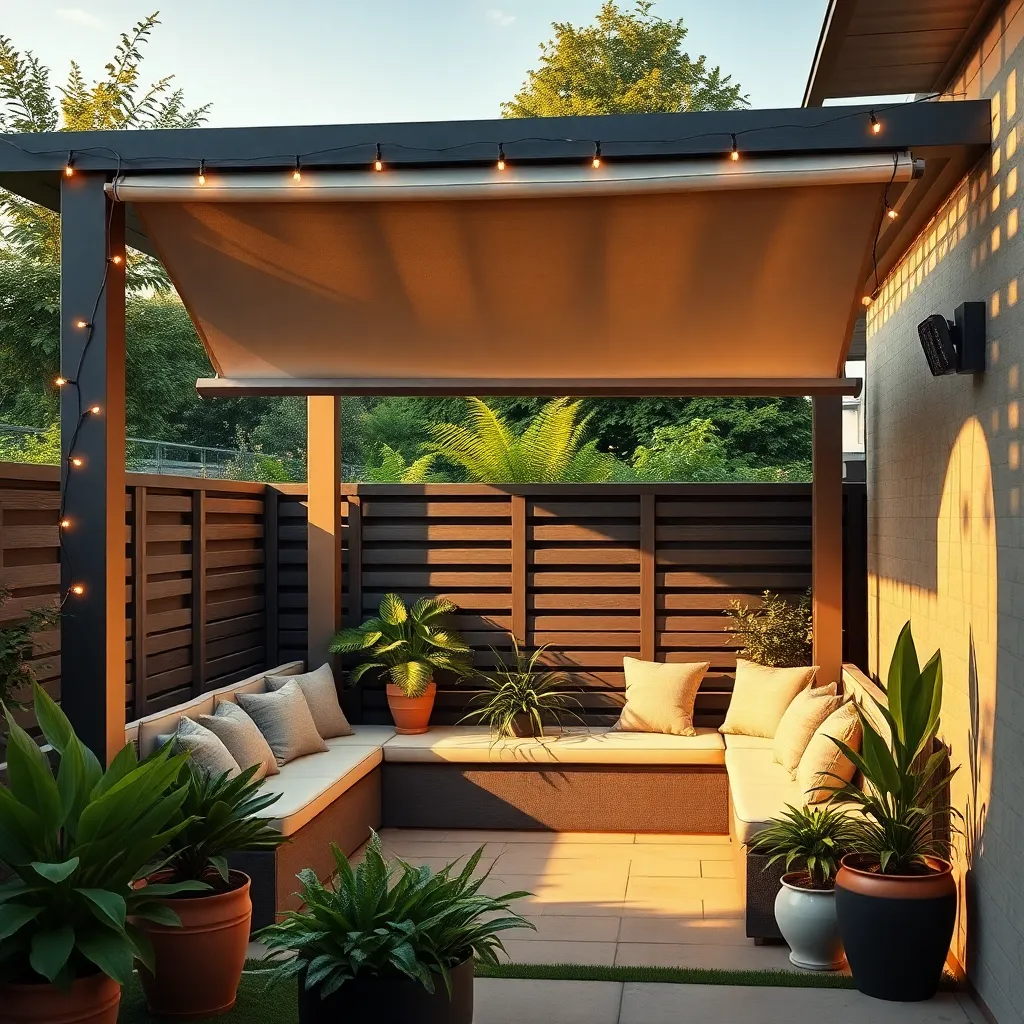
Maximize your small outdoor space with a pergola that incorporates built-in seating and storage. Opt for a design that integrates benches along the pergola’s perimeter, which can serve as both seating and storage. Use weather-resistant materials like cedar or pressure-treated wood to ensure longevity. This approach not only saves space but also adds functionality to your outdoor area, making it cozy and inviting.
For a more advanced design, consider a retractable canopy that provides flexibility depending on weather conditions. This feature allows you to enjoy both sun and shade, maximizing comfort and usability. Choose a high-quality, UV-resistant fabric that complements your outdoor decor, and ensure the mechanism is easy to operate. With this setup, your pergola becomes a versatile haven, no matter the weather.
Choosing Lightweight Pergola Materials
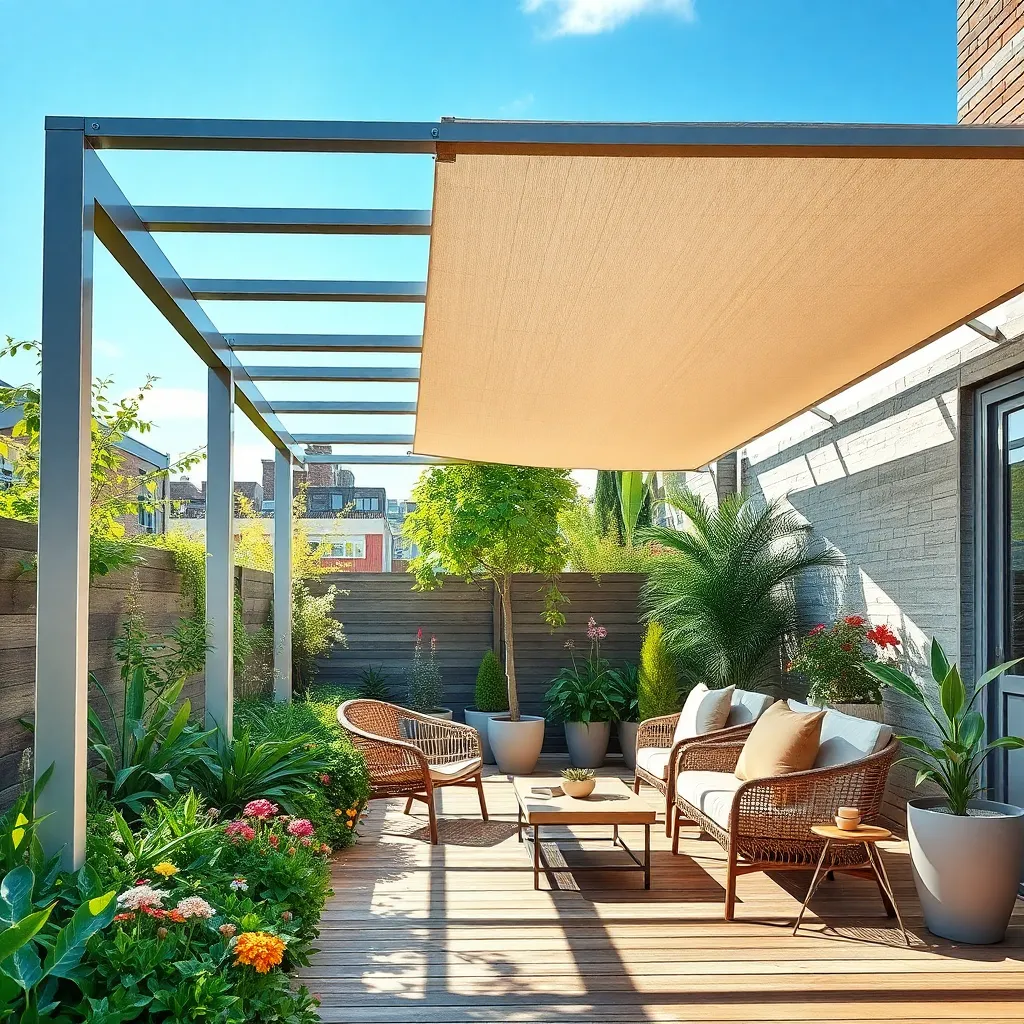
When selecting lightweight materials for a pergola, consider using aluminum or vinyl for their durability and ease of maintenance. Aluminum pergolas are particularly appealing for small spaces due to their sleek design and resistance to rust, making them ideal for various climates. Vinyl, on the other hand, offers a low-maintenance option that is resistant to pests and does not require painting, providing a hassle-free solution for busy homeowners.
For those interested in a more natural aesthetic, bamboo or cedar can provide a lightweight yet sturdy alternative. Bamboo is an excellent choice for eco-conscious gardeners, as it’s a renewable resource with a unique look. Cedar, known for its natural resistance to decay and insects, offers a classic appeal and can be treated with a clear sealant to preserve its warm color. When choosing materials, also consider the dimensions of your space; a pergola with a compact footprint and modular design elements can maximize functionality without overwhelming your outdoor area.
Vertical Gardens for Pergola Charm
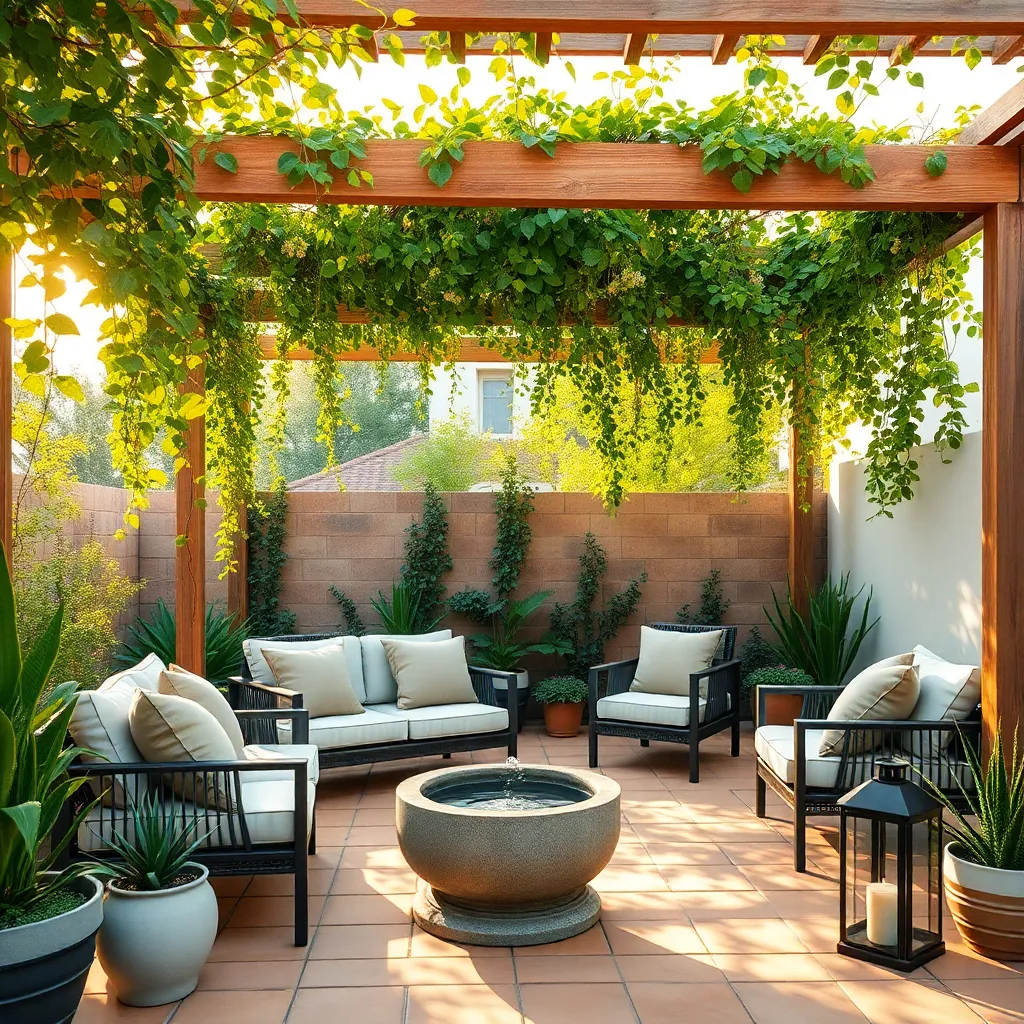
Enhance your pergola’s appeal with a vertical garden that adds both beauty and function. Start by selecting **lightweight planters** made from materials like fabric pockets or thin metal to avoid burdening the structure. Use a combination of **trailing plants** like ivy or jasmine and compact herbs such as basil or mint to maximize space and offer a mix of greenery and aroma. Ensure the pergola can support the extra weight by reinforcing it with sturdy fasteners and brackets.
For a touch of creativity, incorporate **modular vertical garden systems** that can be easily adjusted as your plants grow. These systems often include built-in irrigation, making maintenance a breeze for beginners. Advanced gardeners might consider a **living wall of succulents** or drought-tolerant plants, which require minimal upkeep. Experiment with **varying planter heights** to create an eye-catching, layered effect, keeping in mind that consistent sunlight and proper drainage are key to a thriving vertical garden.
Incorporating Multi-Functional Pergola Features
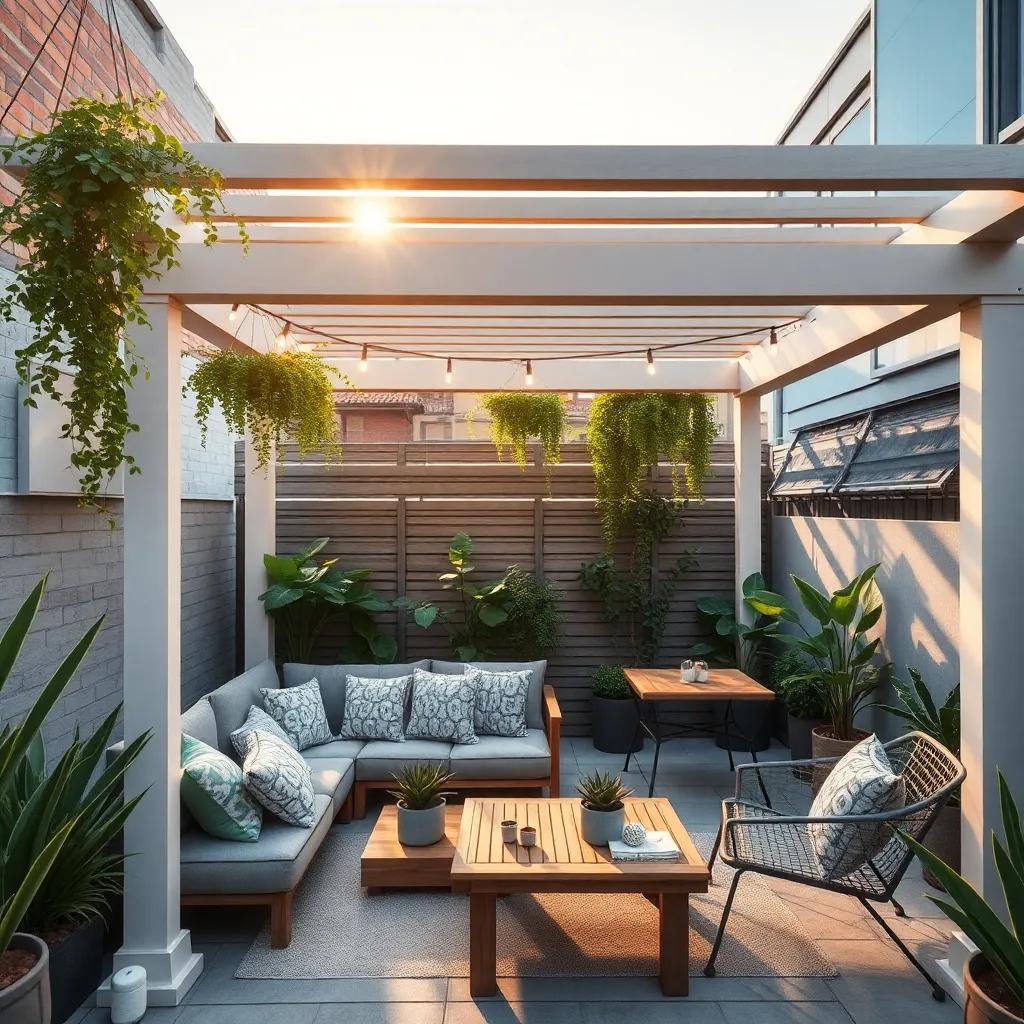
Consider integrating multi-functional features into your pergola to maximize space and utility. Built-in seating options are a smart addition, offering comfort without cluttering the area. You can construct benches using weather-resistant materials like cedar or teak, which are both durable and aesthetically pleasing. For added convenience, include storage compartments beneath the seating to keep outdoor essentials neatly tucked away. This approach not only enhances the functionality of your pergola but also maintains its clean, organized appearance.
To elevate your pergola’s utility, think about adding adjustable canopy systems. These provide flexible shade options, allowing you to enjoy your outdoor space regardless of the weather. Choose canopies made from UV-resistant fabrics to protect against harsh sun rays while ensuring longevity. For those ready for a more advanced project, consider installing retractable canopies that allow you to control sunlight exposure with ease. These features will transform your pergola into a versatile retreat, perfect for relaxation or entertaining guests.
Enhancing Privacy in Small Pergolas
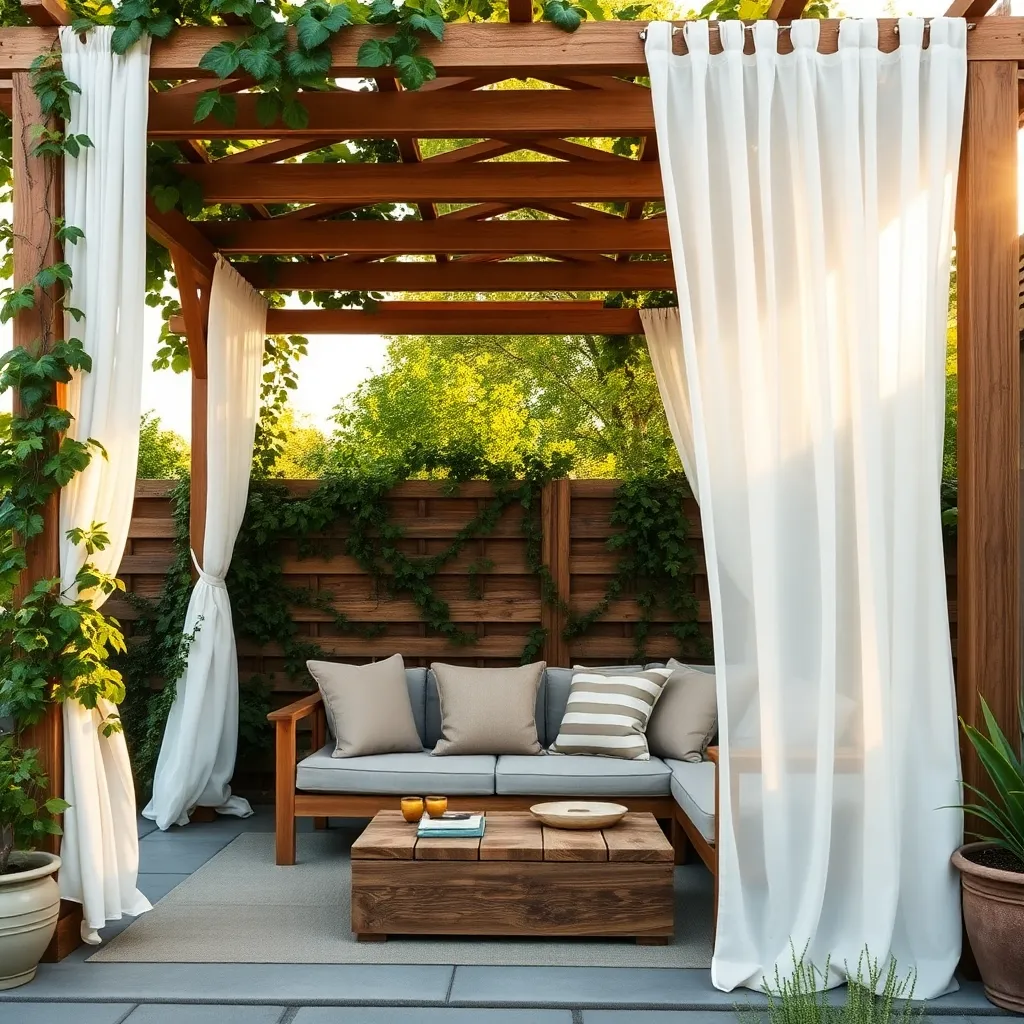
To enhance privacy in small pergolas, consider incorporating lattice panels or trellises along the sides. These structures not only provide seclusion but also serve as a support for climbing plants like jasmine or clematis, adding natural beauty and fragrance. For beginners, a simple wooden lattice can be attached with screws, while more advanced gardeners might opt for custom metal panels for a modern touch.
Another effective privacy solution is to use outdoor curtains made from weather-resistant fabrics, which can be drawn when needed. Install curtain rods or cables along the pergola’s perimeter for easy sliding. For a cohesive look, choose fabric colors that complement your garden’s palette and consider adding tiebacks for a versatile style. This approach is particularly beneficial for those looking to create a cozy, enclosed space without permanent installations.
Lighting Solutions for Intimate Pergolas
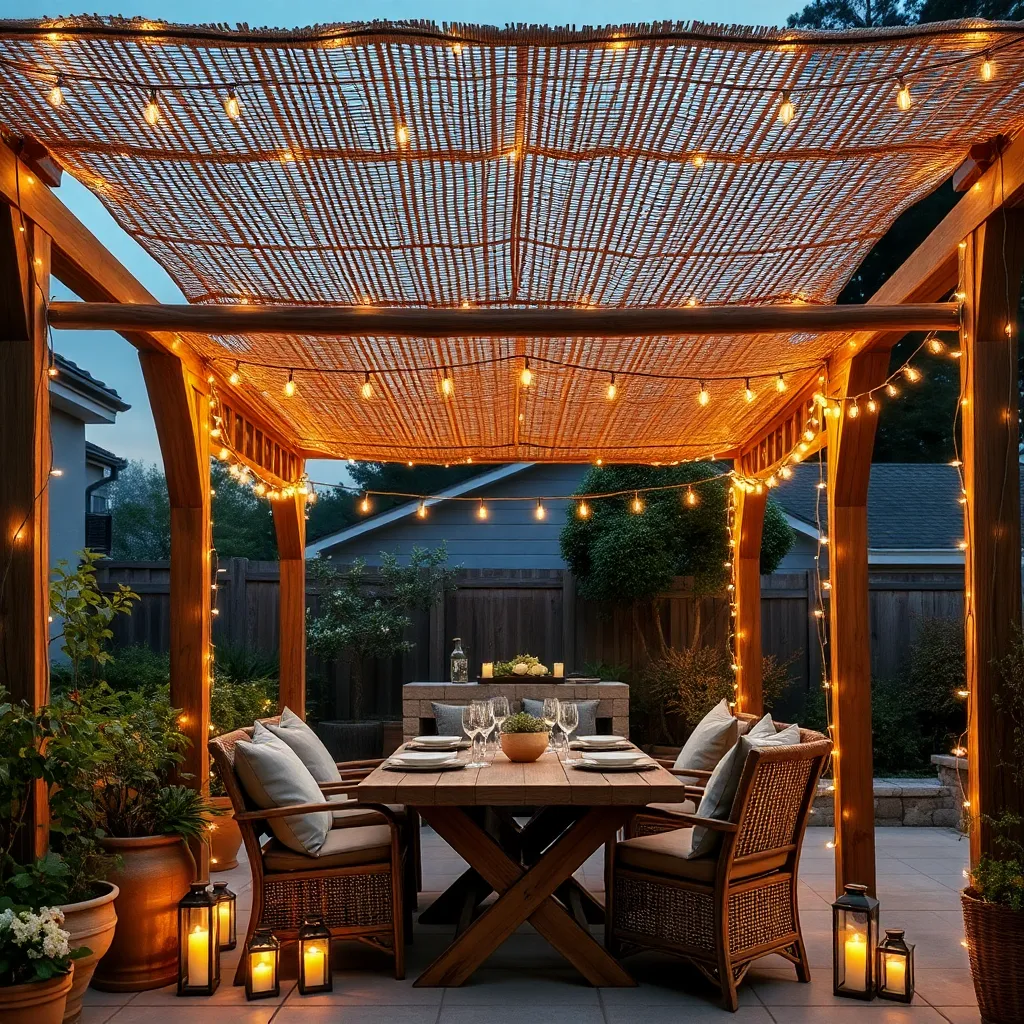
Incorporating the right lighting into your intimate pergola can transform it into a cozy outdoor retreat. Start with string lights, which are both affordable and versatile. You can weave them through the beams or hang them around the perimeter for a soft, inviting glow. Opt for LED versions to save on energy and ensure longevity. For a more sophisticated touch, consider installing recessed LED spotlights within the pergola’s beams. These lights can be angled to highlight specific areas, such as a dining table or plant features, adding both functionality and style.
For those looking to add character, lanterns or pendant lights can serve as striking focal points. Choose weather-resistant materials like galvanized steel or powder-coated aluminum to withstand the elements. If you’re an advanced DIY enthusiast, incorporating solar-powered lights can be a sustainable choice; they eliminate the need for wiring and are environmentally friendly. To enhance ambiance, use dimmable fixtures, allowing you to adjust the brightness based on the occasion. Remember, the key is to balance functionality with aesthetics, ensuring your pergola remains a welcoming space after dark.
Budget-Friendly Small Pergola Projects
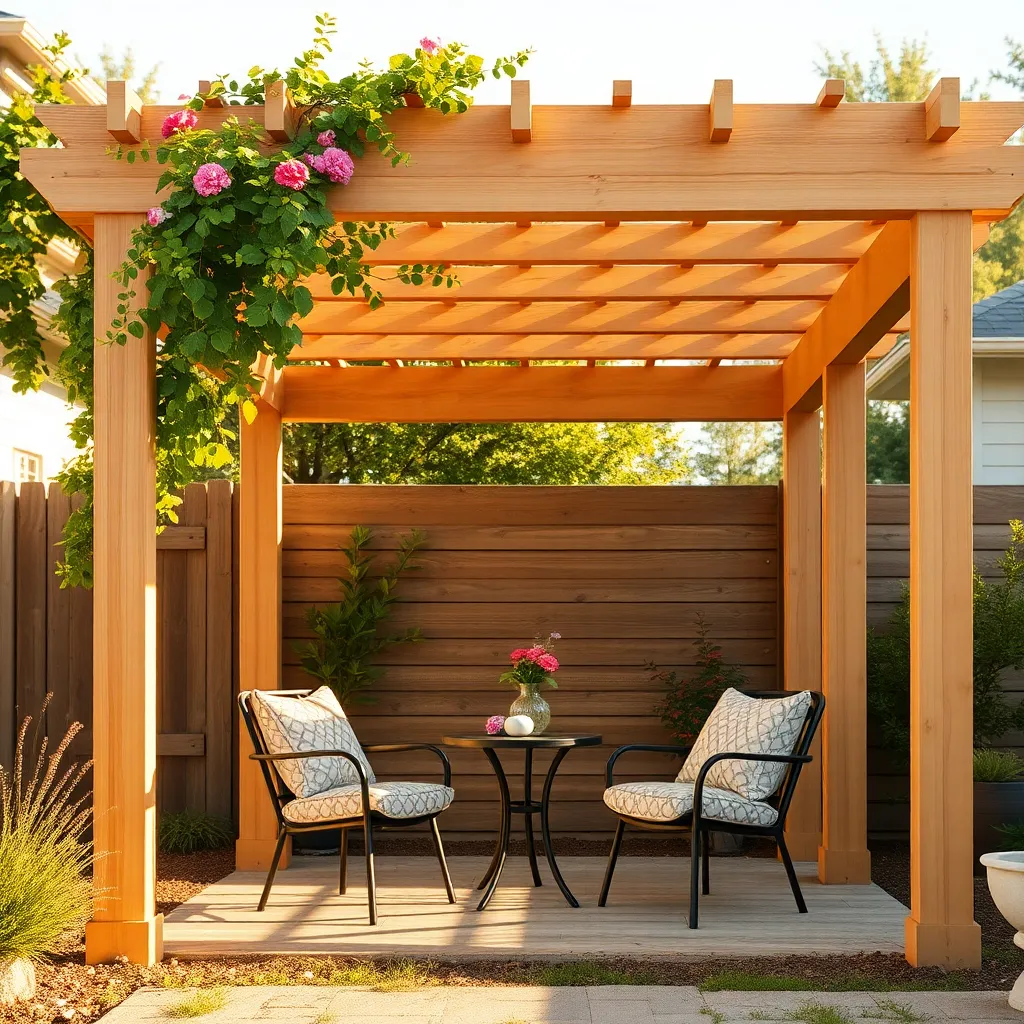
Building a budget-friendly small pergola can transform your outdoor space into a cozy retreat without breaking the bank. Start with basic materials like pressure-treated wood or cedar, which are both durable and cost-effective. For a simple design, opt for a square or rectangular shape with dimensions like 8×8 feet or 10×10 feet, which are ideal for small spaces. Focus on sturdy but minimalistic construction by using 4×4 posts for support and 2×6 beams for the top, ensuring stability while keeping costs low.
To personalize your pergola, consider adding design elements that enhance both aesthetics and functionality. Use climbing plants such as clematis or jasmine to create natural shade and a touch of greenery. Incorporate adjustable fabric panels or bamboo blinds for extra shade and privacy without spending much. For those with some DIY experience, adding a lattice roof or hanging planters can bring an advanced touch to your project. Always remember to anchor your pergola securely to withstand weather conditions, using concrete footings or ground anchors as needed.
Conclusion: Creating Beautiful Outdoor Spaces
In exploring ‘9 Small Space Pergola Designs,’ we discovered that nurturing relationships is much like designing a cozy outdoor retreat: it requires creativity, adaptability, and intentional care. Each pergola design symbolizes a key relationship concept: creating inviting spaces for communication, adapting to change, embracing simplicity, fostering intimacy, utilizing space wisely, prioritizing comfort, balancing light and shade, incorporating personal touches, and nurturing growth. These elements are essential to cultivating a strong, resilient relationship.
Your next step is to choose one concept that resonates most with your current relationship needs and implement a small change today. Whether it’s setting aside time for meaningful conversation under your metaphorical “pergola” or adding a personal touch that reignites passion, taking action will pave the way for deeper connection.
Be sure to save this article as a handy resource for ongoing relationship enhancement. Just as these pergola designs transform small spaces, these principles can transform your relationship landscape. Remember, the key to relationship success is continuous growth and adaptation. By applying these concepts, you’re investing in a flourishing future together. Save this guide and revisit it often as you build a relationship that’s both beautiful and enduring.


